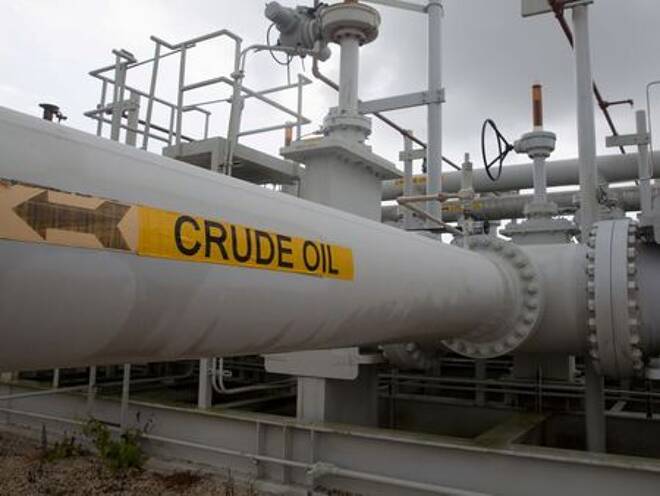Advertisement
Advertisement
Oil Rises to Six-Week High as U.S. Supply Concerns Dominate
By:
NEW YORK (Reuters) -Oil prices rose to a six-week high on Monday as U.S. output remains slow to return two weeks after Hurricane Ida slammed into the Gulf Coast and worries another storm could affect output in Texas this week.
Those price gains came even though the Organization of the Petroleum Exporting Countries (OPEC) trimmed its world oil demand forecast for the last quarter of 2021 due to the Delta coronavirus variant.
Brent futures rose 59 cents, or 0.8%, to settle at $73.51 a barrel, while U.S. West Texas Intermediate (WTI) crude rose 73 cents, or 1.1%, to settle at $70.45.
That was Brent’s highest close since July 30 and WTI’s highest close since Aug. 3.
“Hurricane Ida’s impact is lasting more than the market expected and as some oil production capacity remains shut this week, prices are rising on supply not being restored and therefore not reaching refineries that have restarted operations quicker than producers,” said Nishant Bhushan, oil markets analyst at Rystad Energy.
Further disruption from bad weather could be around the corner, with the U.S. National Hurricane Center projecting Tropical Storm Nicholas will scrape along the South Texas coast on Monday and make landfall near Corpus Christi later tonight.
Royal Dutch Shell began evacuating staff from a U.S. Gulf of Mexico oil platform and other firms began preparing for hurricane-force winds.
Even though OPEC said further oil demand recovery would be delayed until next year when consumption will exceed pre-pandemic rates, analysts noted OPEC and its allies, including Russia, a group known as OPEC+, were still increasing output.
“Despite near-term risks to the demand outlook, OPEC+ is continuing to increase its output by 400,000 barrels per day each month, in line with what it agreed in July,” said Craig Erlam, senior market analyst, UK & EMEA at OANDA.
In addition to the OPEC demand forecast, other bearish factors weighed on Monday’s oil price gains, including rising U.S. shale output, potential supply increases from planned releases of oil from strategic reserves in the United States and China, and the possibility Iran could be closer to selling oil to the world again.
U.S. oil output from seven major shale formations is expected to rise by about 66,000 bpd in October to 8.1 million bpd, the highest since April 2020, according to the Energy Information Administration’s monthly drilling productivity report.
Traders noted China’s planned release of oil from strategic reserves could boost supplies available in the world’s the second biggest oil consumer.
The U.S. government agreed to sell crude oil from the nation’s emergency reserve to eight companies including Exxon Mobil, Chevron and Valero, under a scheduled auction to raise money for the federal budget.
Hopes of fresh talks on a wider nuclear deal between Iran and the West were raised after the United Nations atomic watchdog reached an agreement with Iran on Sunday about the overdue servicing of monitoring equipment to keep it running.
For a look at all of today’s economic events, check out our economic calendar.
(Additional reporting by Bozorgmehr Sharafedin in London and Naveen Thukral and Florence Tan in Singapore; Editing by Marguerita Choy, Mark Potter and Nick Zieminski)
About the Author
Reuterscontributor
Reuters, the news and media division of Thomson Reuters, is the world’s largest international multimedia news provider reaching more than one billion people every day. Reuters provides trusted business, financial, national, and international news to professionals via Thomson Reuters desktops, the world's media organizations, and directly to consumers at Reuters.com and via Reuters TV. Learn more about Thomson Reuters products:
Advertisement
